Showing Spotlights 9 - 16 of 34 in category All (newest first):
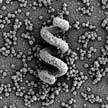 By applying concepts developed in micro- and nanorobotics, researchers demonstrate the controlled motion and delivery of cargo payloads embedded in metal-organic frameworks (MOFs). The helical MOF-based micromachine, propelled by artificial bacterial flagella, can swim and follow complex trajectories in three dimensions under the control of weak rotational magnetic fields. These swimmers are tumor-responsiv and can act as selectively automated and targeted drug delivery platforms.
By applying concepts developed in micro- and nanorobotics, researchers demonstrate the controlled motion and delivery of cargo payloads embedded in metal-organic frameworks (MOFs). The helical MOF-based micromachine, propelled by artificial bacterial flagella, can swim and follow complex trajectories in three dimensions under the control of weak rotational magnetic fields. These swimmers are tumor-responsiv and can act as selectively automated and targeted drug delivery platforms.
May 20th, 2019
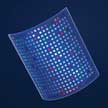 Electronic device versions of the human eye's photoreceptors could potentially be used in a wide range of applications from robotic humanoid vision to artificial retina implantation for vision restoration or even vision extension into a wider range of wavelength. Researchers have now demonstrated that high-performance filterless artificial human photoreceptors can be realized by integrating a novel optical metal/dielectric/metal microcavity structure with vacuum-deposited perovskite photoresponse devices. These easy-to-fabricate artificial photosensors mimic the spectral responses of human color cones and rods.
Electronic device versions of the human eye's photoreceptors could potentially be used in a wide range of applications from robotic humanoid vision to artificial retina implantation for vision restoration or even vision extension into a wider range of wavelength. Researchers have now demonstrated that high-performance filterless artificial human photoreceptors can be realized by integrating a novel optical metal/dielectric/metal microcavity structure with vacuum-deposited perovskite photoresponse devices. These easy-to-fabricate artificial photosensors mimic the spectral responses of human color cones and rods.
May 1st, 2019
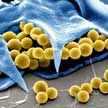 New work on self-propelled biohybrid microrobots has been inspired by recent developments of biohybrid cyborgs that integrate self-propelling bacteria with functionalized synthetic nanostructures to transport materials. Taking inspiration from the science fiction concept of a cybernetic organism, or cyborg, researchers developed a self-propelled biohybrid microrobot, named rotibot, employing the marine microorganism rotifer as their engine.
New work on self-propelled biohybrid microrobots has been inspired by recent developments of biohybrid cyborgs that integrate self-propelling bacteria with functionalized synthetic nanostructures to transport materials. Taking inspiration from the science fiction concept of a cybernetic organism, or cyborg, researchers developed a self-propelled biohybrid microrobot, named rotibot, employing the marine microorganism rotifer as their engine.
Apr 3rd, 2019
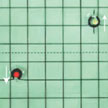 A recent review article highlights the role of electrochemistry in synthesizing materials for self-powered micro- and nanodevices; the aspect of charge transfer and changes in electrochemical potentials for locomotion; control of self-propelled motion using electrochemistry and electric fields; and possible applications in electrochemical sensing and energy generation using micro- and nanoscale motion. The authors discuss various electrochemical techniques, which allow for the fabrication of large amounts of micro/nanorobots from diverse materials, with and without the use of templates.
A recent review article highlights the role of electrochemistry in synthesizing materials for self-powered micro- and nanodevices; the aspect of charge transfer and changes in electrochemical potentials for locomotion; control of self-propelled motion using electrochemistry and electric fields; and possible applications in electrochemical sensing and energy generation using micro- and nanoscale motion. The authors discuss various electrochemical techniques, which allow for the fabrication of large amounts of micro/nanorobots from diverse materials, with and without the use of templates.
May 16th, 2017
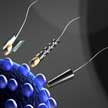 Researchers show how spermatozoa can be useful parts of microdevices: As biocompatible propulsion source, but also entailing other functionalities such as their natural destiny for fertilization, their ability to respond to stimuli, or their ability to take up drugs open up fascinating new applications. They demonstrate first examples of using sperm cells as robotic components. The so-called spermbots are also systems that enable biophysical studies, e.g. of sperm motion in confinement.
Researchers show how spermatozoa can be useful parts of microdevices: As biocompatible propulsion source, but also entailing other functionalities such as their natural destiny for fertilization, their ability to respond to stimuli, or their ability to take up drugs open up fascinating new applications. They demonstrate first examples of using sperm cells as robotic components. The so-called spermbots are also systems that enable biophysical studies, e.g. of sperm motion in confinement.
May 3rd, 2017
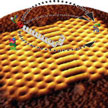 In new work, researchers have utilized diffusion as an effective transport mechanism for DNA nanotechnology. These findings contribute a new aspect to be considered for the design of future DNA motors, molecular machines, and nanorobots as they provide a simple way to transport molecules over distances of potentially several 100 nm; which is much faster than when using conventional DNA walkers or motors, which make many small and slow steps.
In new work, researchers have utilized diffusion as an effective transport mechanism for DNA nanotechnology. These findings contribute a new aspect to be considered for the design of future DNA motors, molecular machines, and nanorobots as they provide a simple way to transport molecules over distances of potentially several 100 nm; which is much faster than when using conventional DNA walkers or motors, which make many small and slow steps.
Mar 19th, 2015
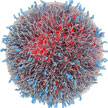 Historically, the approval of Doxil as the very first nanotherapeutic product in 1995 is generally regarded as the dawn of nanomedicine for human use. Although numerous products classified as nanomedicine products have indeed appeared over the past decade, such products have not exactly revolutionized treatment paradigms as envisaged earlier. In particular no molecular machine or nanorobot has yet entered clinical trials, although research in these areas is picking up pace.
Historically, the approval of Doxil as the very first nanotherapeutic product in 1995 is generally regarded as the dawn of nanomedicine for human use. Although numerous products classified as nanomedicine products have indeed appeared over the past decade, such products have not exactly revolutionized treatment paradigms as envisaged earlier. In particular no molecular machine or nanorobot has yet entered clinical trials, although research in these areas is picking up pace.
Mar 10th, 2015
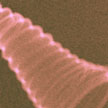 Inspired by nature's ingenious biological designs, researchers have persistently attempted to mimic these biofunctionalities to bring technological breakthroughs. One of these morphologies - the unique shape of a helical coil - is not only interesting from a scientific standpoint but also pivotal, offering DNA its distinctive properties and propelling flagella in viscous fluids, to name a few. With the advent of personalized medicine on the horizon, researchers are now trying to use tiny springs made of carbon nanotubes, i.e. nanocoils, to propel nanorobots to perform microsurgeries.
Inspired by nature's ingenious biological designs, researchers have persistently attempted to mimic these biofunctionalities to bring technological breakthroughs. One of these morphologies - the unique shape of a helical coil - is not only interesting from a scientific standpoint but also pivotal, offering DNA its distinctive properties and propelling flagella in viscous fluids, to name a few. With the advent of personalized medicine on the horizon, researchers are now trying to use tiny springs made of carbon nanotubes, i.e. nanocoils, to propel nanorobots to perform microsurgeries.
Oct 31st, 2014
 By applying concepts developed in micro- and nanorobotics, researchers demonstrate the controlled motion and delivery of cargo payloads embedded in metal-organic frameworks (MOFs). The helical MOF-based micromachine, propelled by artificial bacterial flagella, can swim and follow complex trajectories in three dimensions under the control of weak rotational magnetic fields. These swimmers are tumor-responsiv and can act as selectively automated and targeted drug delivery platforms.
By applying concepts developed in micro- and nanorobotics, researchers demonstrate the controlled motion and delivery of cargo payloads embedded in metal-organic frameworks (MOFs). The helical MOF-based micromachine, propelled by artificial bacterial flagella, can swim and follow complex trajectories in three dimensions under the control of weak rotational magnetic fields. These swimmers are tumor-responsiv and can act as selectively automated and targeted drug delivery platforms.
 Subscribe to our Nanotechnology Spotlight feed
Subscribe to our Nanotechnology Spotlight feed





